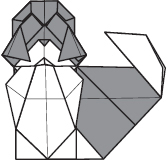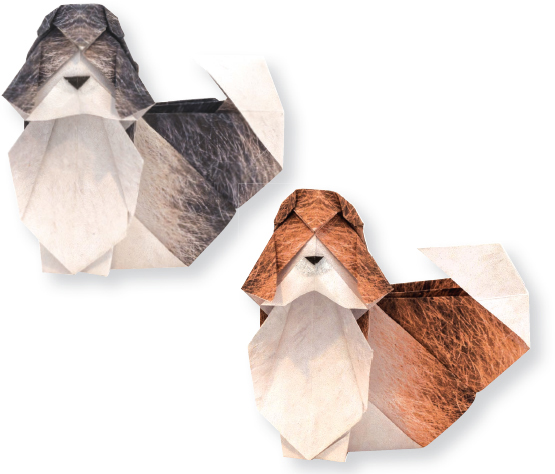SHIH TZU
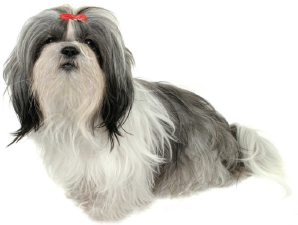
Legend has it that the Buddha brought a Shih Tzu with him on his travels. One day, the Buddha was assailed by hoodlums. To protect his master, the small dog transformed into a fierce lion and chased the villains away. When all was safe, the lion became a little dog again. The Buddha picked up the dog and kissed him on the forehead, leaving the white spot that marks the Shih Tzu breed today.
The Shih Tzu descends from noble bloodlines. In Chinese, the name appropriately means “little lion.” Portrayed in the art and literature of China’s Tang Dynasty (618–907 CE), these small dogs are certainly one of the world’s oldest breeds. Historians believe that they originated in Tibet. It was in China, however, where the monks bred them to be gentle companions as well as palace watchdogs for the imperial court. It was during this time that they developed the characteristics that they are now known for.
Today the Shih Tzu continues to fulfill its dual role as cuddly companion and alert watchdog. Known to bark protectively at the approach of strangers, they warm up quickly, greeting people enthusiastically once they are admitted through the door. A social dog, the loving, playful nature of the Shih Tzu makes it a wonderful pet for families with children. Its outgoing nature makes it an effective therapy dog as well.
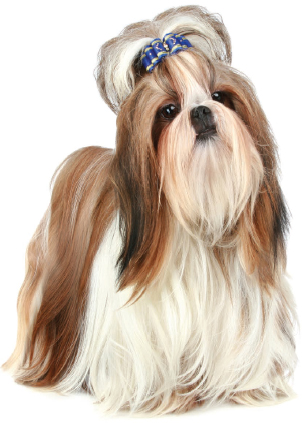
The breed does not shed. Unclipped dogs are draped in long, luxurious coats that sweep the ground as they walk. To avoid excessive grooming, most owners keep their pet’s coat clipped short with hair on the head swept into an elegant topknot.
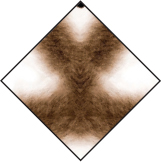
Both Shih Tzus follow the same set of instructions. To fold the second Shih Tzu, follow the instructions on the next page, and after completing the first two steps, orient the paper as shown on left on step 3.
1.Orient the paper as shown. Valley fold in half in each direction, and unfold.
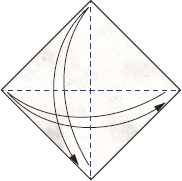
2.Valley fold, aligning tips to center, and unfold. Turn over.
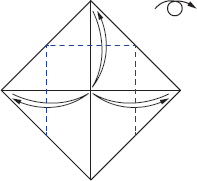
3.Valley fold, aligning tips to existing creases.
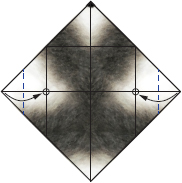
4.Mountain fold in half. Rotate.
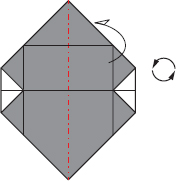
5.Valley fold, aligning existing creases, and unfold.

6.Valley fold, aligning edge to existing crease, and unfold.

7.Unfold.

8.Open, and squash fold along existing creases.
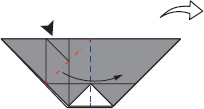
9.Collapse along existing creases, similar to a rabbit-ear fold.
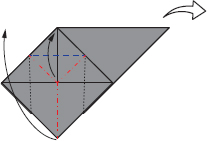
10.Open, and squash fold along existing creases.
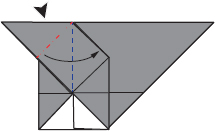
11.Valley fold both sides, aligning edges to center, lifting the diamond-shape flap as necessary, and unfold.
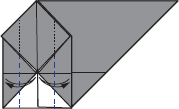
12.Open-sink fold using creases from previous step.
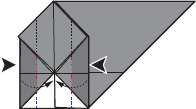
13.Turn over.
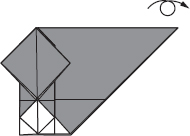
14.Valley fold, aligning top edge to existing crease.
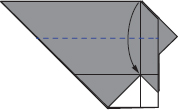
15.Valley fold, aligning top edge to vertical crease, tucking under the top flap in the upper corner, and unfold.
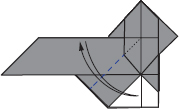
16.Open, and squash fold along creases from previous step.
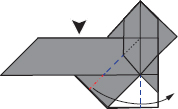
17.Valley fold, aligning edge to crease, and unfold.
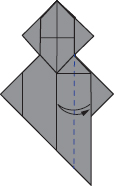
18.Closed-sink fold using creases from previous step.
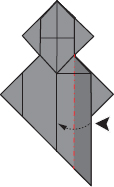
19.Valley fold along edge, and unfold.
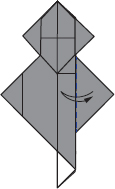
20.Open, and squash fold along existing creases.
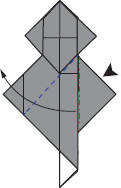
21.Valley fold, aligning corners and creasing firmly, and unfold.
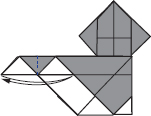
22.Valley fold through all layers except the bottom layer, aligning corners, and unfold.
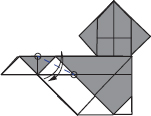
23.Outside reverse fold, making note of the new creases that need to be added.
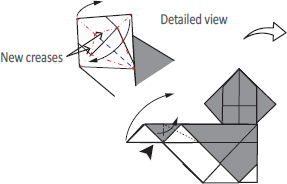
24.Valley fold, establishing a lock.
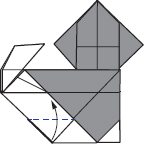
25.Turn over.
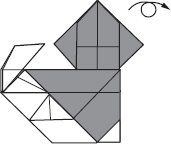
26.Reverse fold the edge between layers. See next step for reference.
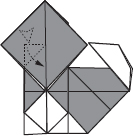
27. Sink fold the middle edge, inserting the sunken section under the top layer on the opposite side.
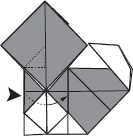
28.Mountain fold the corner.
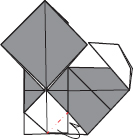
29.Valley fold through all layers, creasing firmly, and unfold.
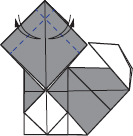
30.Mountain fold where existing creases intersect, and unfold.
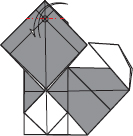
31.Collapse, similar to a Waterbomb Base.
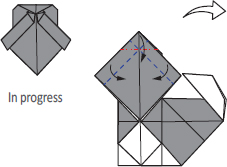
32.Valley fold, aligning edges.
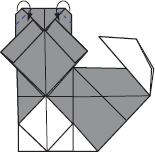
33.Valley fold the triangular flap up and then down, forming the face and nose.
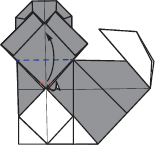
34.Swivel fold, giving shape to the ears.
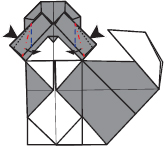
35.Push, shaping the mouth.

36.Valley fold the flaps outward.
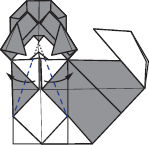
The completed Shih Tzu
